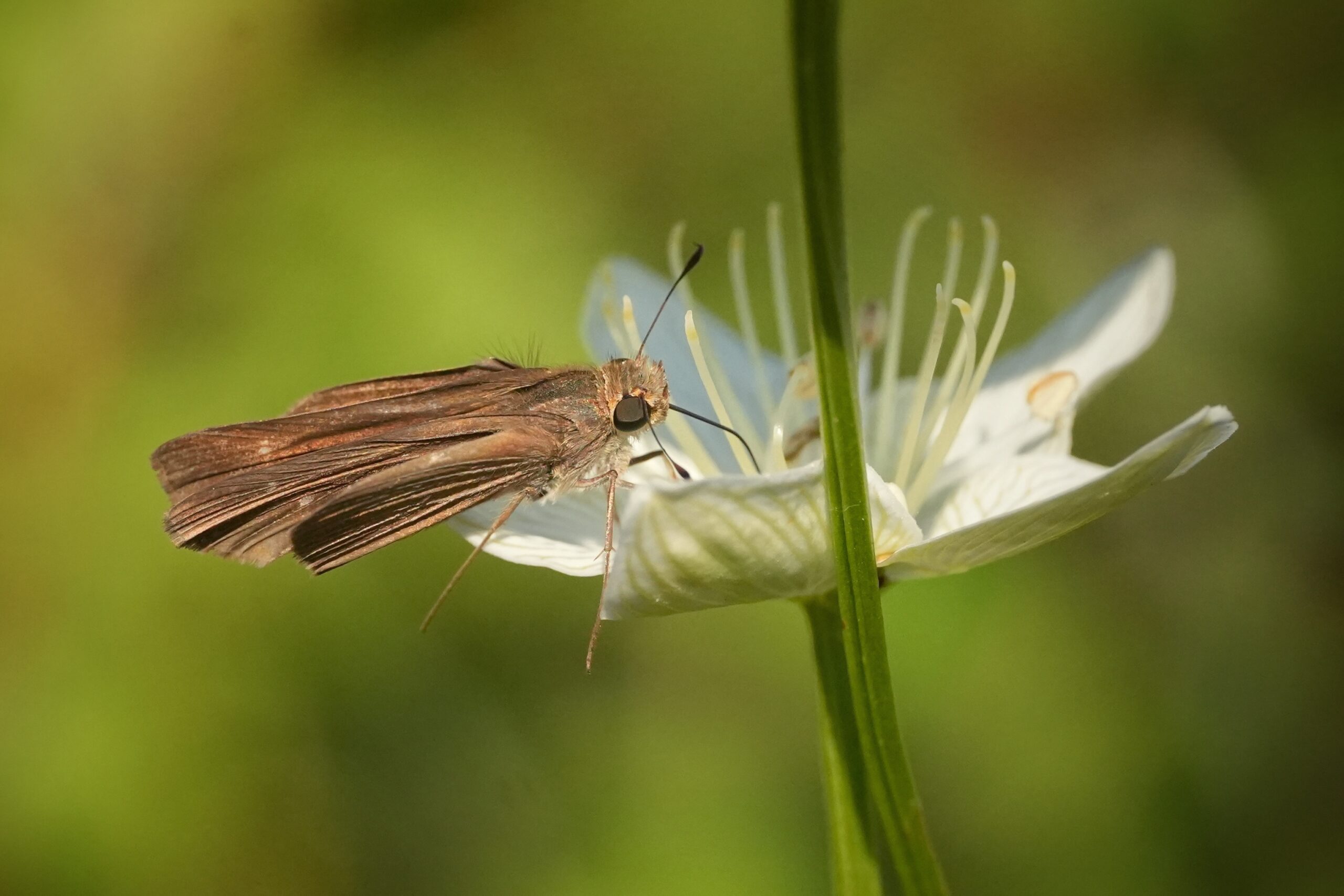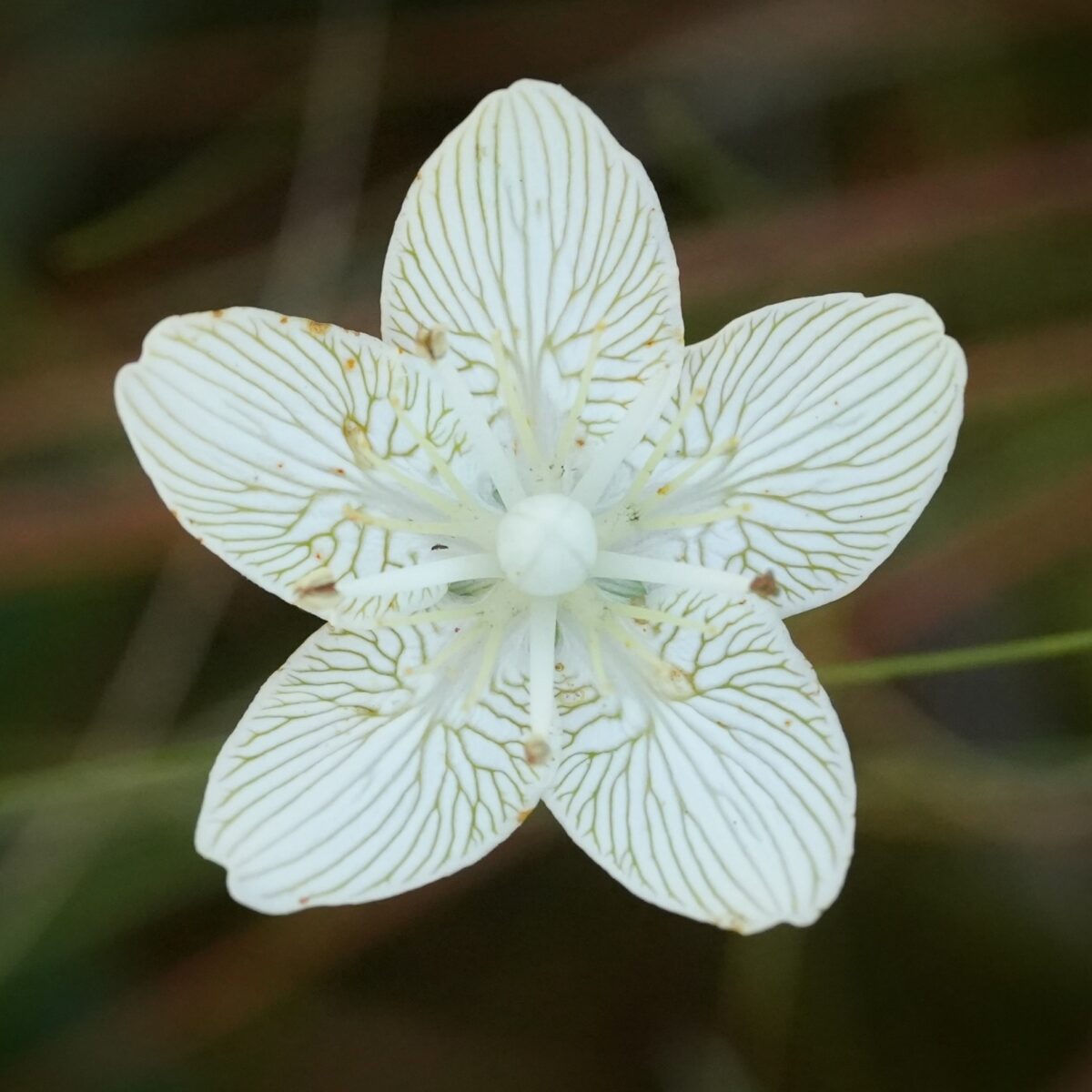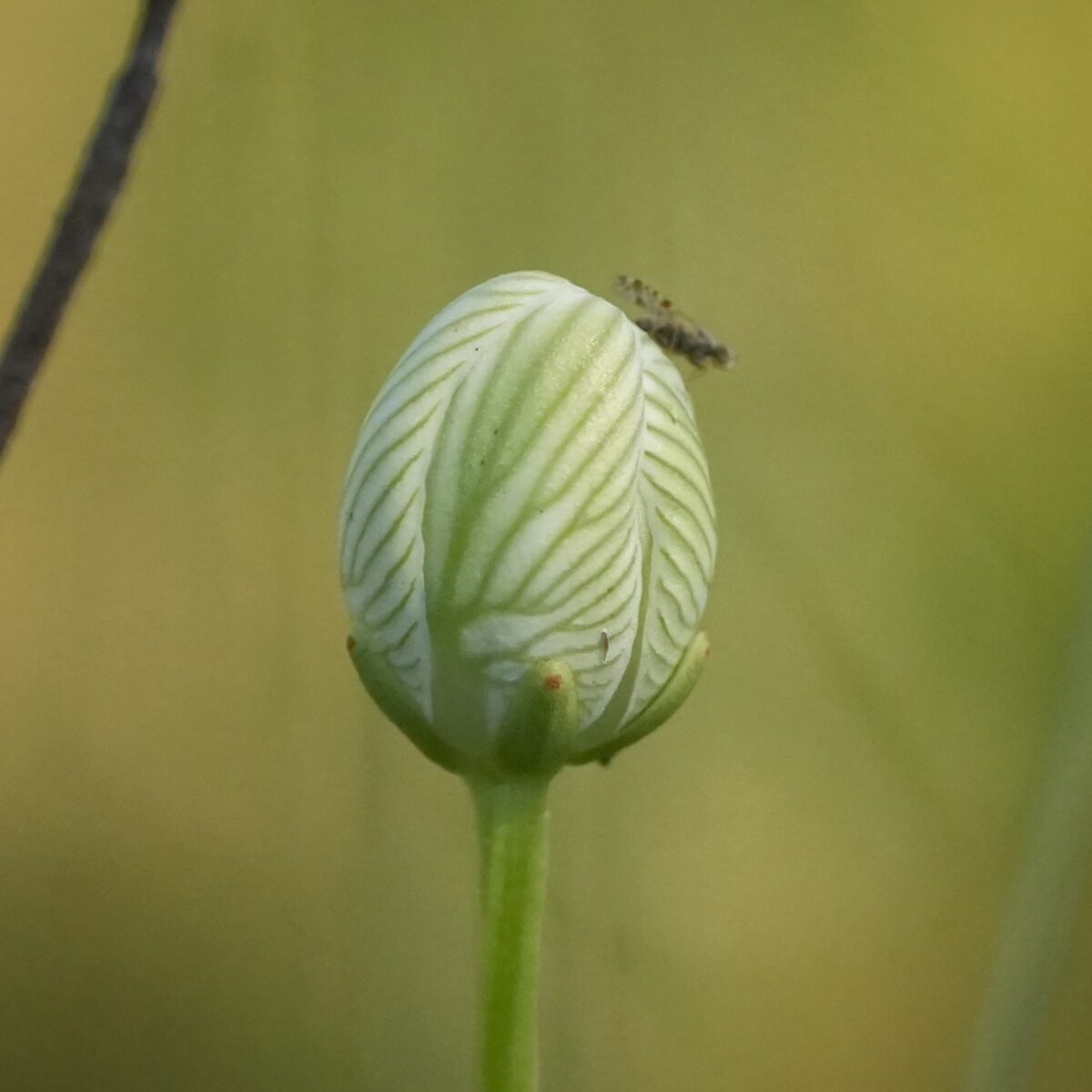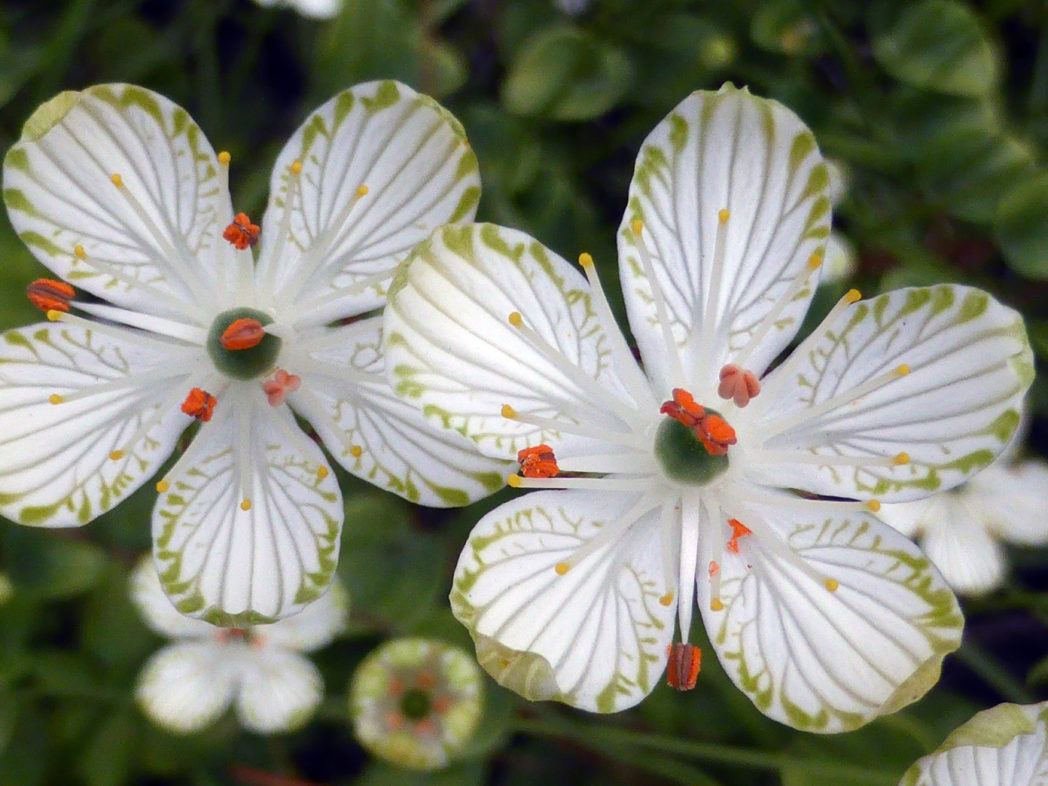Carolina grass-of-Parnassus
Pictured above: Carolina grass-of-Parnassus (Parnassia caroliniana). Photo by Emily Bell. Click on terms for botanical definitions. View post as a PDF.
Carolina grass-of-Parnassus (Parnassia caroliniana) is a rare and striking wildflower. Listed as state-endangered, it is found only in Florida’s Franklin and Liberty counties and a small portion of the Carolinas. It occurs naturally in wet prairies and in the ecotone between pine uplands and seepage slopes. It flowers in abundance where populations occur, creating a stunning fall scene of starry white blooms.
Carolina grass-of-Parnassus flowers occur solitarily atop a long slender green stalk. The blooms are about 1 inch across and have five white oval-shaped petals, each with green veins, giving them a delicate pattern. The ovary is a large and conspicuous white oval in the flower’s center. Basal leaves are large, slightly succulent and rounded to kidney-shaped, but are usually obscured by the grasses among which the plant commonly grows.
The genus name of Parnassia and the common name grass-of-Parnassus refer to Greece’s Mount Parnassus, home of the Muses and to the Oracle of Delphi. Of its common name reference to grass, it is rumored (but unconfirmed) that the cows of Mount Parnassus enjoyed Parnassia as they enjoyed the other grasses, so Parnassia was deemed an honorary grass. (It is not a grass and is in no way related to the grasses, nor does it bear any resemblance to a grass.)
Family: Parnassiaceae
Native range: Franklin and Liberty counties
To see where natural populations of Carolina grass-of-Parnassus have been vouchered, visit florida.plantatlas.usf.edu.
Lifespan: Perennial
Soil: Moist to seasonally wet or saturated soils
Exposure: Full sun
Growth habit: 1-2 feet tall
Carolina grass-of-Parnassus is not commercially available. Visit a natural area to see it.
For information on other Parnassia species, see these resources:




